Harris Springs Canyon, Nevada | Mountain Biking from Centennial Hills in Las Vegas
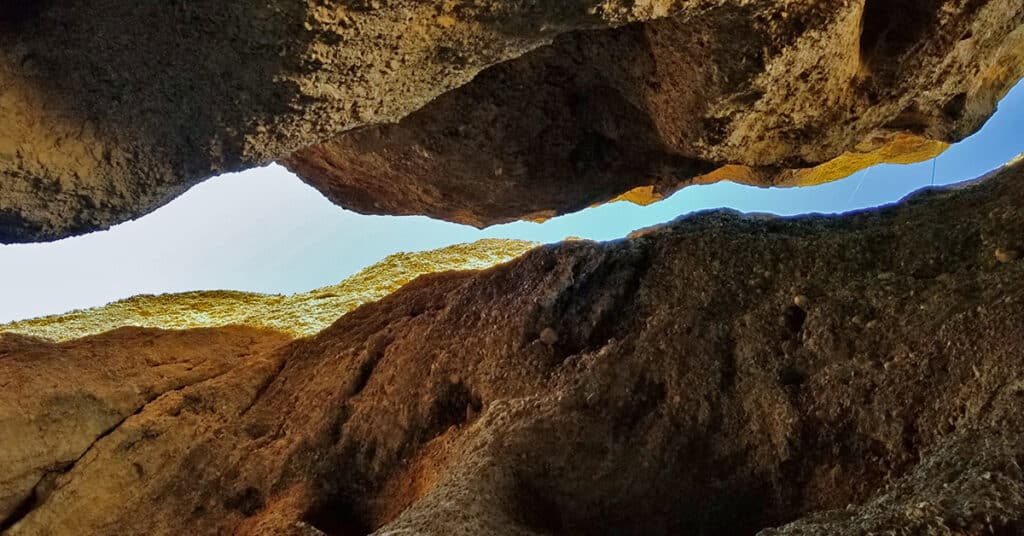
Harris Springs Canyon parallels upper Kyle Canyon Road around 5-8 miles below the Charleston Village area. The most notable feature of the canyon is the incredible slot canyon at its lower opening near the intersection of upper Harris Springs Road and Kyle Canyon Road. Though the canyon parallels Kyle Canyon Road it seems as though it is in an entirely untouched wilderness area as there are no sounds of the vehicles just over the ridge on Kyle Canyon Road. Very often as you round a bend there is a direct view of Charleston Peak. Route Details: About 20 miles to the intersection of Kyle Canyon and upper Harris Springs Roads, then 2-4mi RT in the canyon / Approx. 8,439 > 10,255ft; **Good Route from Upper Harris Sprs. Rd.** Click image or title above for more…
Harris Mountain | Mt Charleston Wilderness | Spring Mountains, Nevada
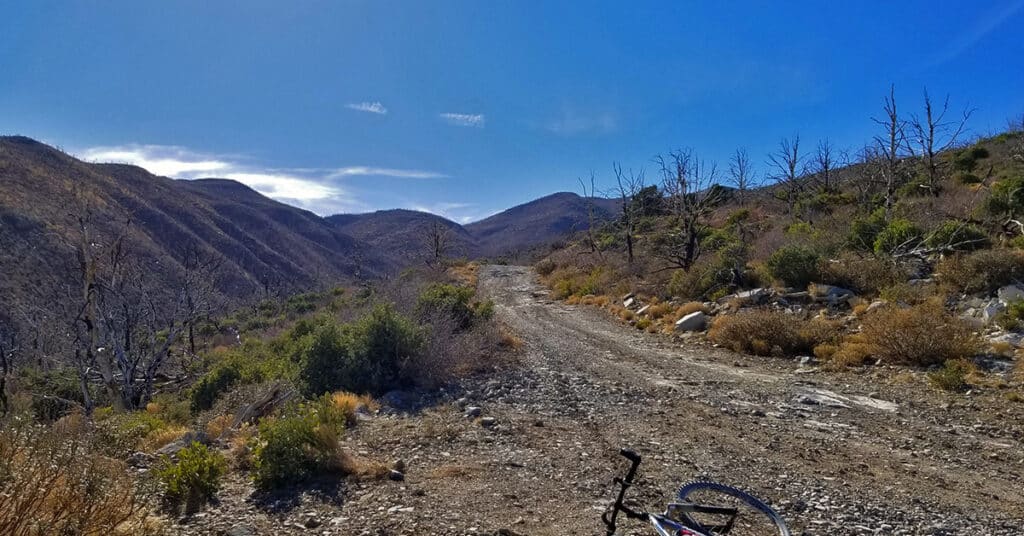
See the Harris Griffith Circuit page on this website. That adventure shows the Harris Mountain summit approach from South Climb Trailhead at Cathedral Rock. A future adventure posted to this page will show Harris Mountain summit approach from Harris Springs and Harris Mountain Roads, which is the most popular summit approach. Route details: 12-15-miles RT from the intersection of Kyle Canyon and Upper Harris Springs Road; **Unpaved roads and established trails all the way.** Click image or title above for more…
Griffith Peak | Mt Charleston Wilderness | Spring Mountains, Nevada
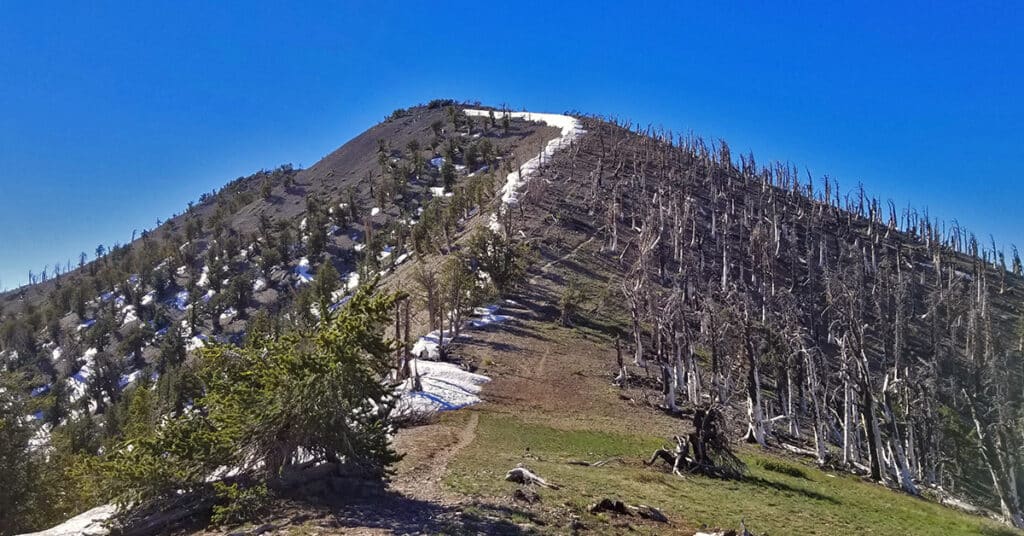
At 11,056ft, Griffith Peak is the third highest peak in the Spring Mountain range and Southern Nevada. Though often overlooked by hikers whose destination is Mt. Charleston, the highest peak at 11,918ft, Griffith Peak is a great summit destination in itself. It has a unique view of the Eastern portion of Las Vegas, the Strip and the mountains bordering Red Rock Canyon and Calico Basin which are not visible from Mt. Charleston or Mummy Mt. The summit itself is more interesting than the barren Mt. Charleston summit. And finally, Griffith Peak makes a great out and back conditioning run for trail runners as the trail is a fairly good running surface, the incline is steady and steep and the round trip is just under 10 miles so one can travel fairly light and fast. Route Details: 9.3 mi RT / Approx. 7,713 > 11,060ft; **Excellent Trail** Click image or title above for more…
Cockscomb Peak and Ridge, Spring Mountains, Nevada

Cockscomb Peak and Ridge is little over a 4-mile round trip with a nearly 3,000ft elevation gain. Stretching from Hwy 157 Northward up to its highest elevation of 9692 ft, it creates a beautiful and rugged feature that can be viewed in a unique way from every high point in the canyon. As of the writing of this article there were no trails to Cockscomb Peak and Ridge which makes the approach, especially from Hwy 157, a great opportunity to practice some light wilderness navigation skills. The final mile up to the summit from the Hwy 157 approach affords spectacular views of Mummy Mountain, Fletcher Peak, Harris Mountain and the Griffith/Harris Circuit, Griffith Peak and the lower South ridge of Kyle Canyon. It’s like being on a mountaintop for that entire stretch! Route details: 5 mi / Approx. 7,785 > 9,307ft; **Mostly Excellent Trail via Trail Canyon Trail; Wilderness, no Trail from Hwy Kyle Canyon Rd** Click image or title above for more…
Charleston Peak from Cathedral Rock
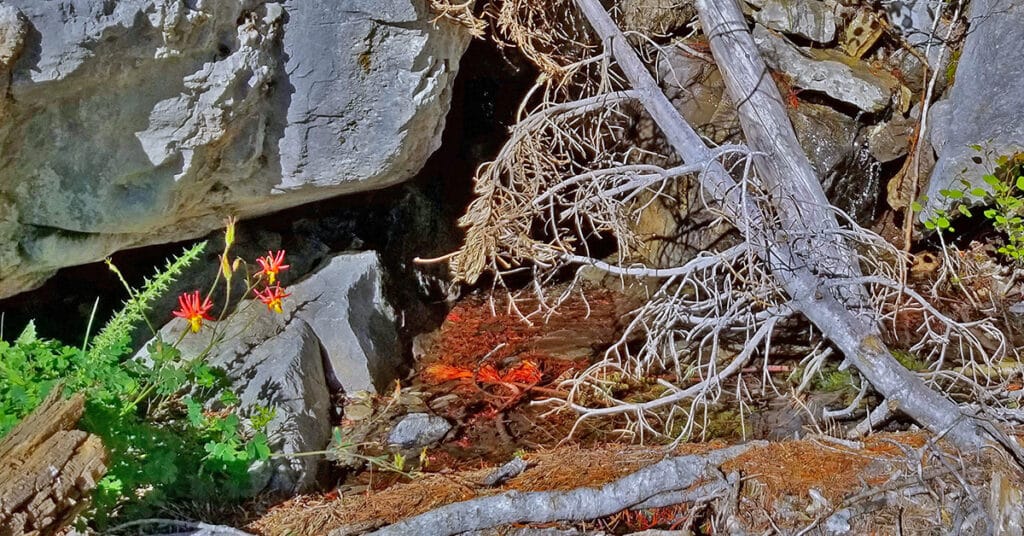
Behind Cathedral Rock there are two very inconspicuous routes that go straight up the side of the South Ridge of Kyle Canyon. They are actually washes that I understand have been used by climbers to ascend Charleston Peak during the Winter months when the South Climb Trailhead and parking lot has been closed and blocked off and the upper elevations are snowed in. One of the most beautiful year-round springs in the Spring Mountains flows through this route in the area above Cathedral Rock. The route to the top of the South ridge of Kyle Canyon may take up to 4 hours from the Cathedral Rock Trailhead. Route details: 18 mi / Approx. 7,713 > 11,918ft; **Wilderness, No Trail** Click image or title above for more…
Charleston Peak Snow Dust | Mt. Charleston Wilderness | Spring Mountains, Nevada
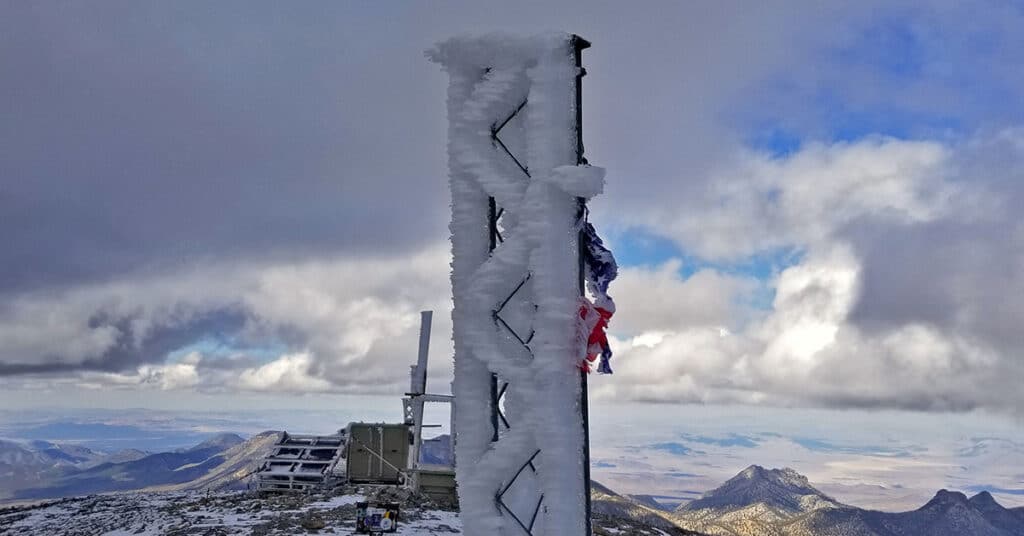
This is a very magical view of Charleston Peak during a dusting of snow in mid-October. The conditions were just right to coat every pine needle of every bristlecone pine tree with an intricate glistening layer of snow and ice. Route description: 17 mi / Approx. 7,713 > 11,918ft; **Excellent Trail** Click image or title above for more…
Charleston Peak | Mt Charleston Wilderness | Spring Mountains, Nevada

At 11,918ftm Charleston Peak is the highest mountain in the Spring Mountain Range and in Southern Nevada. Here you get the best view of the entire North-South Charleston Loop including all the mountain peaks mentioned above, along with a great view of Charleston Village over 5000ft immediately below, then all the way down Kyle Canyon to I-95 and beyond. The approach trail is about 8.5 miles in length from the South Loop Climb trailhead, but many make this an 18-mile circuit adventure. Route description: 17 mi / Approx. 7,713 > 11,918ft; **Excellent Trail** Click image or title above for more…
Cathedral Rock, Mt. Charleston Wilderness, Nevada
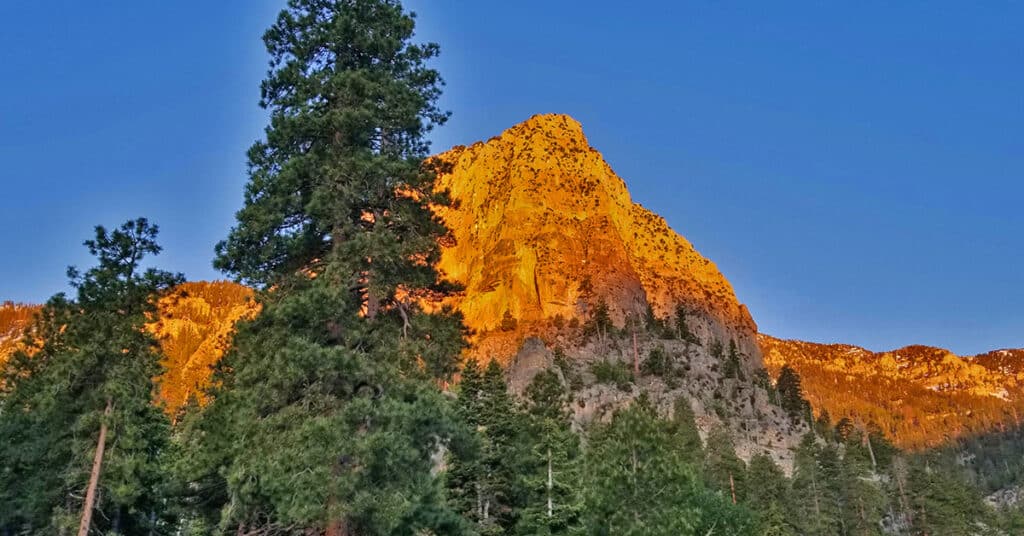
The 8597ft Cathedral Rock is located in the Mt. Charleston Wilderness of Nevada. The trail to the top is only 1.3 miles long, but has tremendous views of Kyle Canyon, Charleston Peak, Lee Peak, Mummy Mountain, Fletcher Peak and Harris Mountain giving Cathedral Rock one of the best views to be had anywhere given a 2.6 mile round trip hike. Route details: 5.5 mi / Approx. 7,713 > 8,585ft; **Excellent Trail** Click image or title above for more…
Angel Peak via Lucky Strike Road | Mt. Charleston Wilderness | Spring Mountains, Nevada
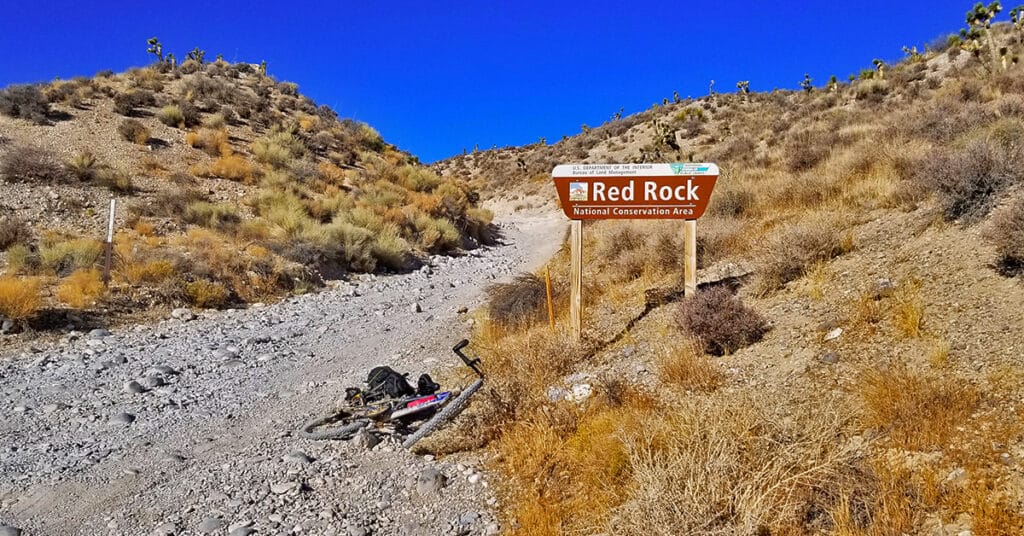
There is a rather wild desert area below Angel Peak that can be accessed through the rugged 4WD Lucky Strike Road. Both ends of Lucky Strike Road contain some class 2 climbing sections, so your vehicle needs to be very sturdy. The 3-mile stretch immediately below Angel Peak can be pretty brutal, being a cross between a 4WD road and an avalanche slope! However, the sunset views of the Sheep Range and Gass Peak on that stretch are spectacular, and at night the Las Vegas Valley lights up like Christmas! This is an experience of Lucky Strike road on a mountain bike. Route details: 17.1 mi / Approx. 4,500 > 8,500ft; **Unpaved Road, Poor Condition** Click image or title above for more…
01 Lovell Canyon Overview | La Madre Mountains Wilderness | Spring Mountains, Nevada

Lovell Canyon is a beautiful, little known canyon beginning at the Southern base of the saddle between Griffith Peak and Harris Mountain and extending all the way to Hwy 160 near Potosi Mountain. Lower Lovell Canyon skirts the entire length of the Rainbow Mountains Wilderness and provides a unique access to that wilderness. Upper Lovell Canyon is bordered by Sexton Ridge and Wilson Ridge. Lovell Canyon is within the La Madre Mountains Wilderness area. There are improved car camping areas throughout Lovell Canyon and it is a popular recreation destination for those who know of its existence. Lovell Canyon Road spans the 13-mile length of lower Lovell Canyon, ending at the Lovell Canyon trailhead and camping area. This area provides access to numerous hiking opportunities in Lovell Canyon along with wilderness excursions up Sexton Ridge to Griffith Peak and up Wilson Ridge to Harris Mountain. These two ridges border upper Lovell Canyon. Best time of year for adventures here: Late Fall to early Spring below 5,000ft; Early Summer to Mid-Fall above 5000ft. Temperatures at the higher elevations are usually in the mid-70s even when Las Vegas Valley is up to 115 degrees! Winter temperatures in the lower elevations will average in the 40’s to 60’s. Expect to navigate Winter snow above 8,000ft. Follow the thumbnail images to view individual adventures in Lovell Canyon, Nevada. Click image or title above for more…
